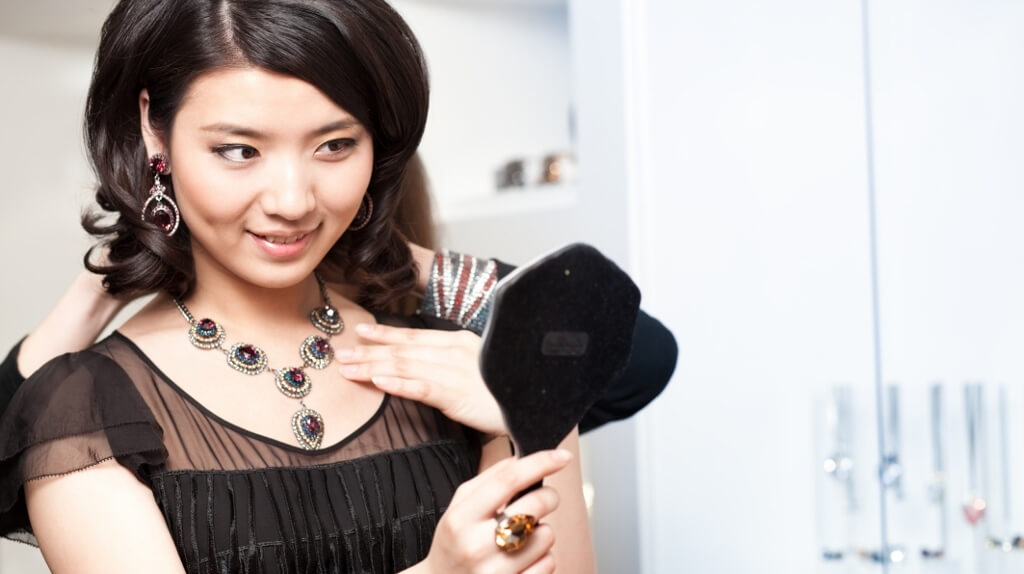
Stone setting is the process of securing gemstones onto a piece of jewelry, ensuring they are held in place while maximizing their beauty and brilliance. It’s not just a technical skill—it’s an art form. Whether it’s a delicate diamond solitaire or an intricate pavé setting, the way a stone is placed can make or break a design.
For any jewelry designer, mastering stone setting is non-negotiable. It determines not only the aesthetics but also the durability and wearability of the final piece. No one wants a ring with a loose gemstone or an earring where the setting overpowers the stone itself. That’s why understanding different techniques and knowing when to use them is crucial.
Why Stone Setting Is Essential for Jewelry Designers
A beautifully set stone isn’t just about holding a gem in place—it transforms a piece into something extraordinary. Here’s why every jewelry designer needs to master this skill at one of the best internationally acclaimed jewelry design schools.
- Enhances the Stone’s Beauty – The right setting can make a gemstone look larger, more vibrant, and more luxurious. A poor setting, on the other hand, can hide its brilliance or make it look dull.
- Ensures Durability – Jewelry is meant to be worn, and stones must be secure. A solid setting prevents gems from falling out or getting damaged over time.
- Defines the Overall Design – The way a stone is set affects the entire aesthetic of the piece. Whether it’s sleek and modern or vintage and ornate, the setting plays a major role.
- Impacts Comfort and Wearability – A well-set stone doesn’t just look good; it feels good to wear. Rough or bulky settings can snag on clothing or feel uncomfortable on the skin.
- Increases Value – A properly set stone can enhance the overall value of a piece. Jewelry collectors and buyers look for quality craftsmanship, and that includes expert stone setting.
Popular Stone Setting Techniques Every Jeweler Should Know
There isn’t just one way to set a stone—there are many. The choice of setting depends on the design, the type of stone, and how much durability is needed. Let’s break down some of the most common and important techniques.
1. Prong Setting – The Classic Choice
The prong setting is one of the most widely used methods, especially for engagement rings. It features small metal claws that hold the gemstone securely while allowing maximum light to enter, enhancing its sparkle.
Best for: Diamonds, solitaires, and center stones that need to shine.
Why it works: Prongs are minimalistic, letting the stone take center stage while still keeping it secure.
2. Bezel Setting – Sleek and Protective
A bezel setting wraps around the stone with a thin metal rim, keeping it firmly in place. This offers extra protection, making it an excellent choice for everyday jewelry.
Best for: Soft or fragile stones, cabochons, and contemporary designs.
Why it works: It provides a smooth, modern look and ensures the stone won’t snag or loosen over time.
3. Pavé Setting – A Surface of Sparkle
Pavé (French for “paved”) settings feature tiny gemstones set closely together with minimal metal visible, creating a shimmering surface. It’s often used for wedding bands and statement pieces.
Best for: Adding texture, sparkle, and an ultra-luxurious look.
Why it works: The close arrangement of stones gives off an incredible shine without overpowering the design.
4. Channel Setting – A Secure, Streamlined Look
In a channel setting, stones are nestled between two strips of metal without prongs, creating a smooth, flush finish. It’s often used for wedding bands and eternity rings.
Best for: Small stones, modern designs, and pieces that require extra security.
Why it works: The stones are protected, reducing the risk of damage, while the seamless row creates a clean, elegant look.
5. Tension Setting – The Illusion of Floating Stones
This contemporary technique uses pressure to hold a gemstone in place between two metal ends, giving it a “floating” appearance.
Best for: Statement pieces and modern designs.
Why it works: It provides a striking visual effect while still keeping the stone firmly secured.
6. Gypsy (Flush) Setting – Perfect for Everyday Wear
A gypsy setting, also known as a flush setting, involves embedding the stone directly into the metal so that it sits level with the surface. It’s commonly used for men’s rings and minimalist designs.
Best for: Pieces that need durability, such as wedding bands and everyday rings.
Why it works: The stone is completely protected, making it ideal for those who lead an active lifestyle.
Choosing the Right Setting for Your Jewelry
When selecting a setting for a piece, there are a few key factors to consider:
- Stone Hardness – Softer gemstones (like opals or emeralds) need protective settings like bezels to prevent chipping.
- Jewelry Type – Rings need more durable settings, while earrings and pendants allow for more delicate options.
- Desired Aesthetic – Some settings, like pavé, add extra sparkle, while others, like bezel, create a sleek, modern feel.
- Wearability – If the piece will be worn daily, a secure setting like channel or flush may be the best option.
Mastering Stone Setting: The Mark of a True Jewelry Designer
A well-set stone isn’t just about functionality—it’s about craftsmanship, precision, and an eye for detail. Even the most stunning gemstone can lose its impact if it's set poorly. That’s why every serious jewelry designer invests time in mastering stone setting techniques.
Understanding the different types of settings and how they interact with gemstones is what separates amateur work from professional-level craftsmanship. Whether designing fine jewelry or working on bold statement pieces, knowing how to properly secure and showcase a gemstone is a must.
So if you’re looking to elevate your jewelry designs, make sure you’re not just choosing beautiful stones—but setting them beautifully, too.
Thanks for signing up to Minutehack alerts.
Brilliant editorials heading your way soon.
Okay, Thanks!